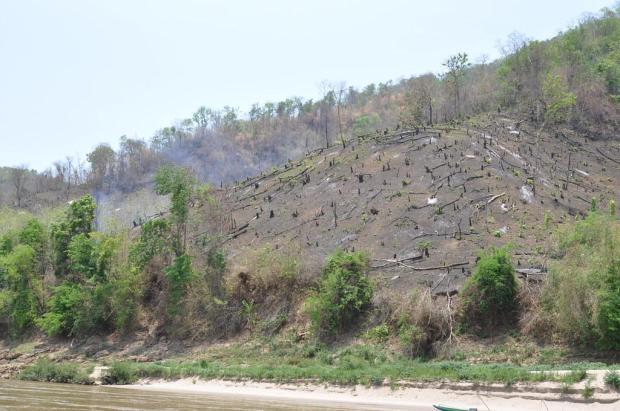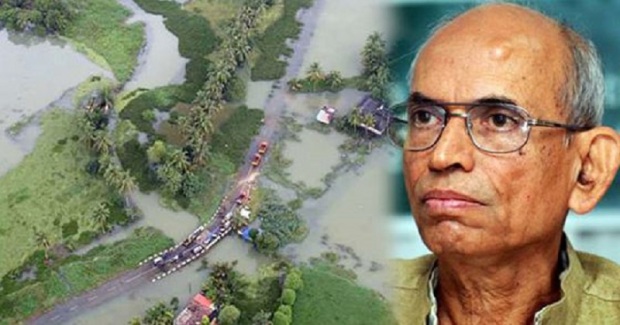New micro snail species discovered in Meghalaya’s Mawsmai cave
A micro snail species named Georissa mawsmaiensis has recently been discovered from Mawsmai, a limestone cave in Meghalaya, 170 years after the last such discovery was made.

It was in 1851 that Georissa saritta, a member of the same genus as the latest find, was collected and described from the Musmai (Mawsmai today) valley near Cherrapunjee by WH Benson.
The discovery this time has been reported in the Journal of Conchology. The researchers involved in the discovery are Nipu Kumar Das and NA Aravind of the Ashoka Trust for Research in Ecology and the Environment (ATREE), Bengaluru.
The Mawsmai cave is one of the major tourist attractions in Meghalaya. The researchers, however, worry that the high tourist influx to the cave will be a major threat to the species.
Some changes have been made to increase the aesthetics of the cave, such as artificial lights and cemented floor and steps. These changes, along with the high tourist influx, may pose threat to this micro snail species including other cave faunas.
👉DTE
Protecting a forest on a hill in Imphal
Moirangthem Loiya Ngamba from the Meitei community in Manipur, began growing plants on the Maru Langol hill range in Imphal around 20 years ago, transforming a once-dry 300-acre hill into a forest.

Each year, to prevent forest fires, Loiya and other volunteers create a fire line around the forest by making a gap in plantation or other combustible material that acts as a barrier to slow or stop the progress of a wildfire. Two of the biggest success stories, of regrowing forest in India, are that of Loiya’s and Jadav Payeng from Majuli in Assam, popularly known as The Forest Man of India.Loiya named the forest Punshilok, which means ”a spring of life” in the Meitei language.

Northeast India has rich biodiversity, but the 2019 Indian State of Forest Report showed that the region witnessed a total decrease of around 765 sq km of forest cover, with Manipur suffering the highest loss of 499 sq km of forest cover.
Northeast India is considered to be wild but these kinds of efforts or narratives present the real picture that the region is not all lush, green and remote but there are problems leading to deforestation
2% mitigation cost for infra projects in protected areas done away with: NBWL
More than a month after imposing 2% mitigation cost for infrastructure projects passing though national parks, sanctuaries, tiger reserves etc., the National Board for Wildlife (NBWL) has decided to completely do away with any such cost. Instead of imposing a fixed cost, mitigation measures and costs associated with such measures will be prescribed while recommending the project proposals.

The ministry will issue an advisory to all the states/UTs in this regard, the standing committee of the NBWL under the Ministry of Environment, Forest and Climate Change decided at its latest meeting, which was chaired by Environment Minister Bhupender Yadav.
During a meeting of the NBWL standing committee on August 7, the issue of cost of mitigation measures due to impact of developmental activities in protected areas was discussed owing to the fact that different states and UTs imposed different rates as the cost for mitigation of a project’s impact on the environment.

During a meeting on September 24, the standing committee was “informed that the ministry is of the view that instead of imposing a uniform cost on all projects, it would be more appropriate if mitigation measures are suggested by the chief wildlife wardens for each project”, according to the minutes of the meeting.
The Environment Ministry’s focus has been on reconciling its action to the government’s economic priorities. So it is highly likely that the fallout of NBWL’s project by project consideration will financialise the damage to wildlife and its habitats in order to align with the push for linear and area-based infrastructure.
👉TOI
Devastation in coasts and hills underlines ecological fragility, calls for revisiting development paradigms
This monsoon season has given ample evidence of extreme weather events, long foretold by climate science experts. Whether in the Western Ghats or the Himalayas, there are pressing reasons for states to rethink development paradigms.

In July, a fortnight of torrential rain left a trail of destruction in the mountains of north India and the coastal parts of Western India. At least 20 people are feared to have lost their lives in another bout of floods in Uttarakhand. In Kerala, incessant downpour in the past four days has swelled rivers and caused landslides, sweeping away homes, bridges and claiming at least 38 lives — worse is feared with the IMD predicting another spurt of rainfall from Wednesday.
Both states have issued flood alerts and begun to evacuate people from flood-prone areas. But these states require much more than emergency measures to address and mitigate their climate-related vulnerabilities.
The topography of most hilly regions makes them prone to landslides. Deforestation, quarrying, road construction and other land-use changes that pay short shrift to ecology increase vulnerabilities of such areas during episodes of heavy rainfall. That’s why several expert committees have counseled utmost caution in implementing infrastructure projects in both the Himalayas and the Western Ghats.

In 2011, for example, the Madhav Gadgil committee recommended that a roughly 1,30,000 sq km stretch spanning Gujarat, Karnataka, Kerala, Maharashtra and Tamil Nadu be declared an environmentally sensitive zone. The panel headed by one of the country’s top ecologists called for strict regulation of developmental activities in this stretch.
None of the six states agreed with its recommendations. Kerala, in particular, objected to the proposed ban on mining, restrictions on construction activities and embargoes on hydroelectricity projects.
The substantially diluted recommendations of another committee headed by K Kasturirangan — it proposed to whittle down the Western Ghats’ eco-sensitive zone by about half of what was earmarked by the Gadgil panel — also did not get much traction in the Western Ghat states.
Four held with smuggled pangolin in Nabarangpur: Odisha
Swift action by forest officials resulted in the rescue of a pangolin and arrest of four persons from Rayagada district involved in the smuggling of the endangered species in Nabarangpur district on Monday evening.

Official sources said the accused were apprehended with the animal while trying to sell it in Nabarangpur district. “We had reliable information about the seller and accordingly a plan was chalked out to nab them. A 15-member team was constituted and one of our staff under the disguise of a buyer contacted them and reached the pre-decided place under Nabarangpur forest range for transaction,” said Dhanurjay Mahapatra, ACF, Nabarangpur forest division.
The rescued pangolin weighs around 1.7 kg and a detailed investigation is underway to ascertain from where the animal was procured and details of others involved in the racket, the officer said.
👉TOI

